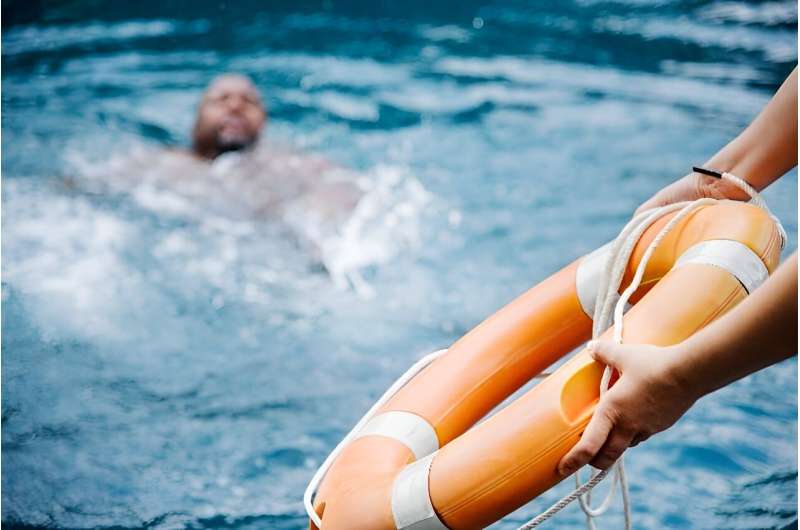This article has been reviewed according to Science X's editorial process and policies. Editors have highlighted the following attributes while ensuring the content's credibility:
fact-checked
reputable news agency
proofread
U.S. drowning deaths rising again after years of decline

Following decades of declines, drowning deaths are once again climbing in the United States, new government data shows.
More than 4,500 people died from drowning each year in 2020 through 2022, 500 more per year than in 2019, researchers from the U.S. Centers for Disease Control and Prevention found.
Increased access to basic swimming lessons and water safety training could save many lives, researchers said.
"I've seen firsthand the effects of drowning: families forced to say goodbye to their loved ones too soon," CDC Chief Medical Officer Dr. Debra Houry said in an agency news release.
"Understanding the barriers people face to accessing basic swimming and water safety skills training can help us better understand how to address those barriers, decrease drowning rates and save lives," Houry added.
Drowning is the leading cause of death for toddlers ages 1 to 4 in the United States, and the new study found that drowning rates were the highest in this age group.
By race and ethnicity, the highest drowning rates were found among Black people and American Indian/Alaska Native people, researchers found.
Nearly 40 million adults (15%) do not know how to swim, and over half (55%) have never taken a swimming lesson, researchers noted.
Black people in particular lack swimming skills. More than one in three (37%) Black adults said they don't know how to swim, compared to 15% of all adults.
In addition, two out of three Black adults (63%) and three in four Hispanic adults (72%) say they've never taken a swimming lesson.
These differences in self-reported swimming ability might be linked to a lack of access to proper swim lessons, researchers said. For example, swim lessons might be too expensive or not available in some communities.
Other people might fear water too much to learn to swim, or feel uncomfortable in swimwear, researchers added.
"No one should have to lose a loved one to drowning. Improving access to effective prevention strategies, like basic swimming and water safety skills training, can reduce drowning risk," said lead researcher Tessa Clemens, a health scientist in CDC's Division of Injury Prevention.
The CDC Vital Signs report recommended that communities build or revitalize public pools, to increase access to swimming, and provide affordable swimming and water safety lessons. Hiring a diverse aquatic staff also could help people become more comfortable with the water.
Recommendations for everyone include:
- Learning basic swimming and water safety
- Building fences that fully enclose and separate a pool from a house, to prevent toddlers from wandering into the water
- Wearing a life jacket while boating
- Avoiding alcohol during swimming, boating and other water activities.
- Learning CPR skills
More information: The World Health Organization has more on drowning.
Copyright © 2024 HealthDay. All rights reserved.




















